Preservation Periodical: Volume 3, Issue 1
Winter 2024
Historic Building Information Modelling (HBIM)
By Sharon Park
Using Building Information Management Systems to build a Heritage model (HBIM).

The Smithsonian’s Office of Planning, Design and Construction (OPDC) is undertaking a pilot study to develop a Heritage Building Information Modeling (HBIM) database for historic buildings. The case study is the circa 1870-1880 Sellman Tenant House on the property of the Smithsonian Environmental Research Center (SERC) in Edgewater, Maryland.

The Sellman Tenant House was constructed after the Civil War circa 1870-1880 and is believed to have used existing materials that had been part of at least two buildings elsewhere on the site. There is very little information about the early buildings, except in the Historic Structure Report for the main house (Woodlawn) which identified ancillary buildings on the Woodlawn property that might have been enslaved dwellings. The first permanent housing on the property was 1735 when Woodlawn was a tobacco farm with at one time 24 enslaved workers. The later Sellman Tenant House was used by tenant farmers, and the House was only used for storage after a fire occurred in the 1960s. The small and unfinished interior (18’ by 32’) of the Sellman Tenant House made it a good candidate to test if creating an HBIM record could be done simply, with a high level of accuracy and interactivity.
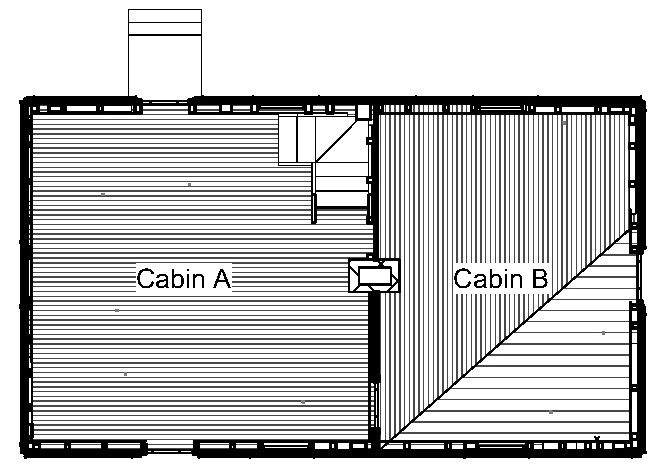
Building Information Modeling (BIM), sometimes referred to as Building Information Management, is a methodology using 3D scanning, photogrammetry, 360 photographs, aerial drone captures, or other methods to digitally record and visualize a building in an interactive and layered manner. BIM creates a model to store information outside of databases, built on attributes and the merging of other data regarding the building. For heritage or historic buildings, there is an emerging field of HBIM as a source for storing extensive documentation, analysis, and interpretation of a building.
HBIM is analogous to creating a digital library of information on the building by establishing characteristics or assets that can be scanned and integrated (tagged) into digital plans and sections. The primary software used for the Sellman Tenant House HBIM was Revit which also uses a program of ArcGIS, an online cloud software, to connect the building to a larger context of geo-referenced maps and landscapes. Visual analysis in the field can tag images, later transferred into Revit. A color key to identify specifics, can be added, such as in the drawings below, which highlight current conditions.
Much work was done on the House in the 20th century, including supporting the house on block/stucco foundation walls and installing a tin roof over the historic circa 1870 shingles. For the Sellman Tenant House, the period of significance is identified as 1870-1880 which will be used to inform the future work. In 2024, there will be a stabilization project to repair existing damage in the southwest corner, strengthen the roof framing, add period appropriate wooden roofing shingles, and reclad the exterior with horizontal wooden siding.
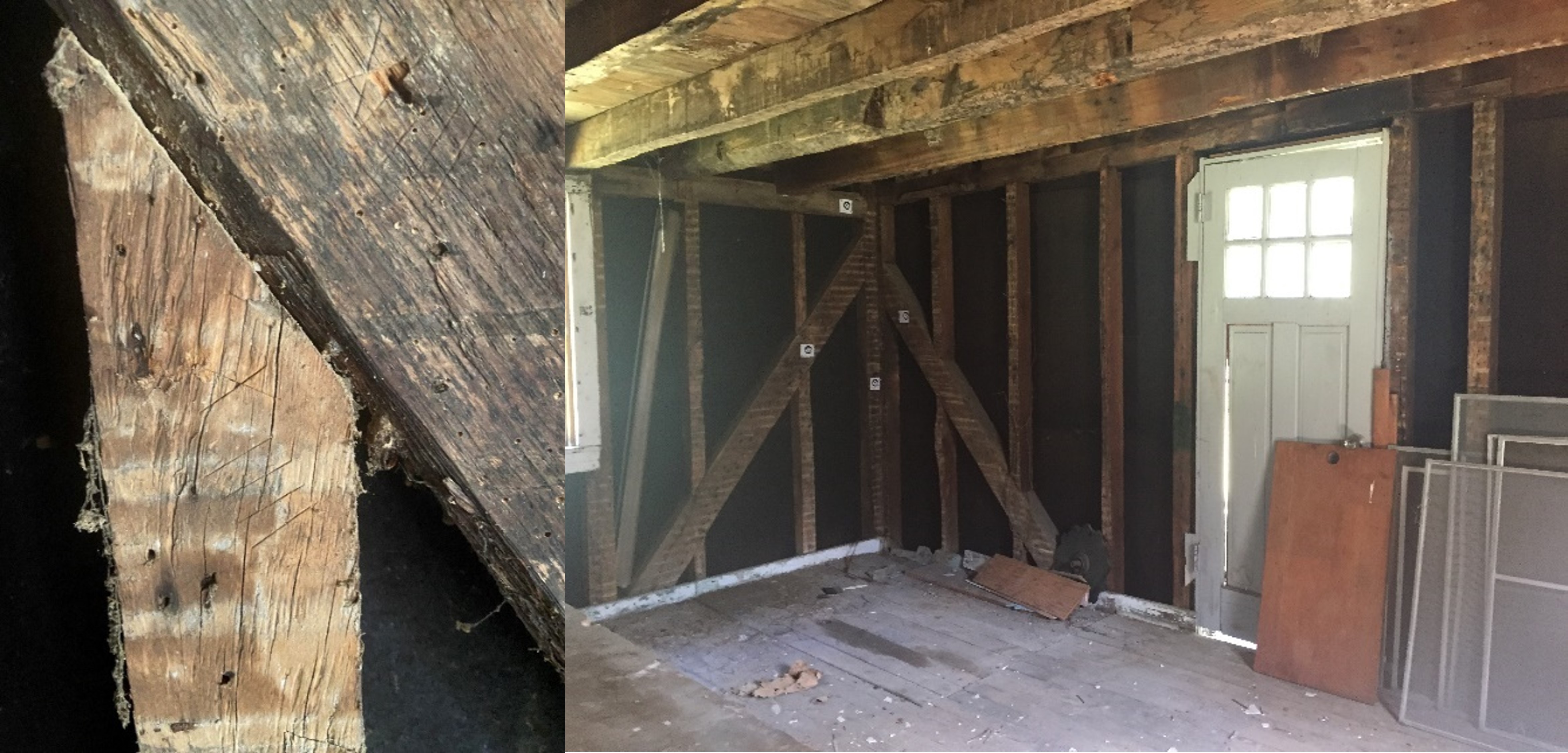
HBIM systems are very complex and require expensive equipment, but this case study in partnership with Georgia Institute of Technology, is looking to find a simplified program that can tailor assets about a building to start layering the documentation of a resource. For example, new smartphone software can capture digital animated images comparable to expensive laser data capture programs. Asset fields allow for the identification of each structural member by date and construction method (e.g., hand hewn, pit sawn, circular sawn lumber) or deterioration conditions (e.g., evidence of fungal, insect, moisture damage or even missing structural members), and one can track material changes over time for elements such as the exterior cladding or roofing.


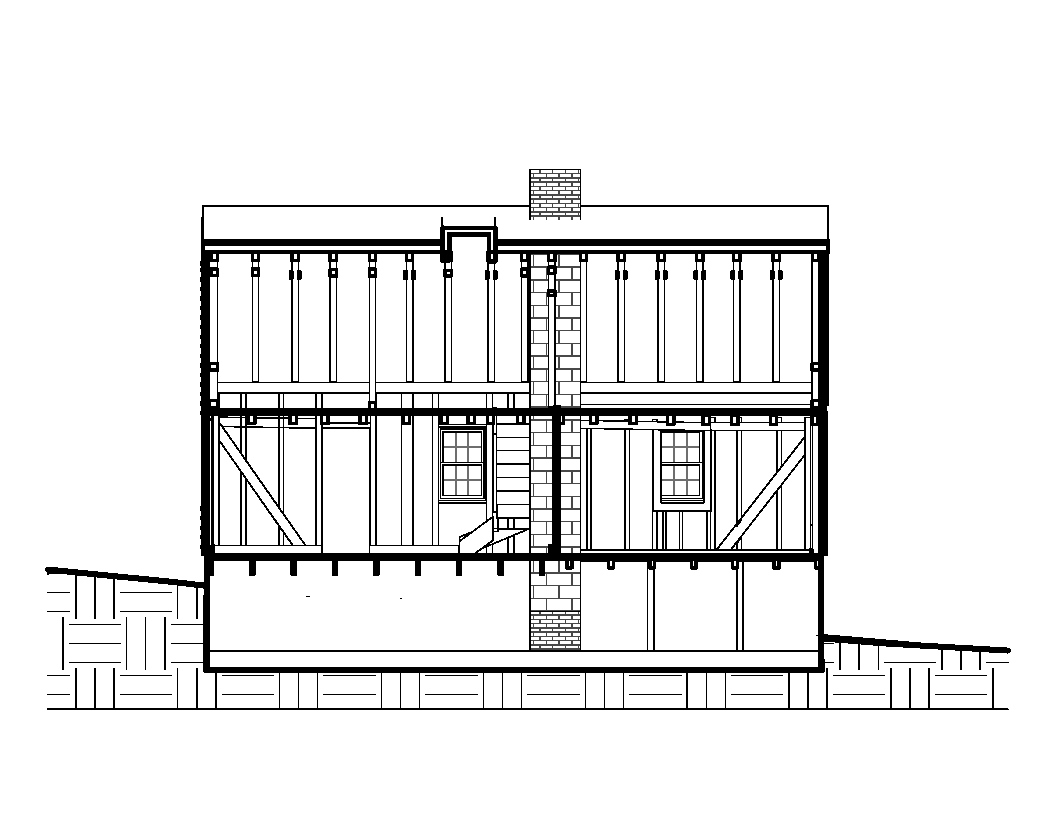

Moving beyond documentary record through 3D scanning, 360 photos, and aerial photogrammetry captures, this project will advance heritage BIM modeling for curatorial study and public interaction. Color coding eras and links to Historic Structure Reports, condition studies, and a glossary of wood deterioration creates a complete record documentation of the historic resource.
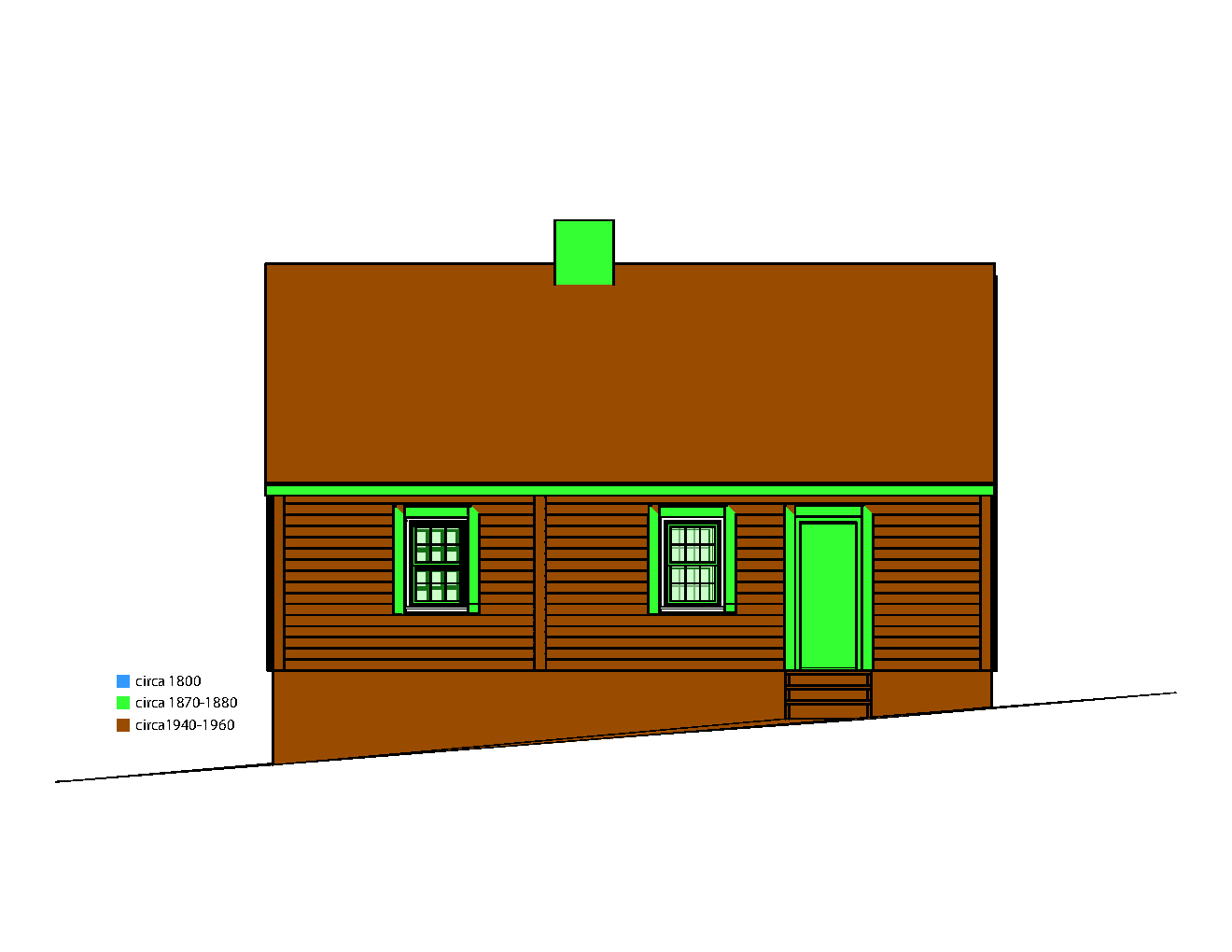
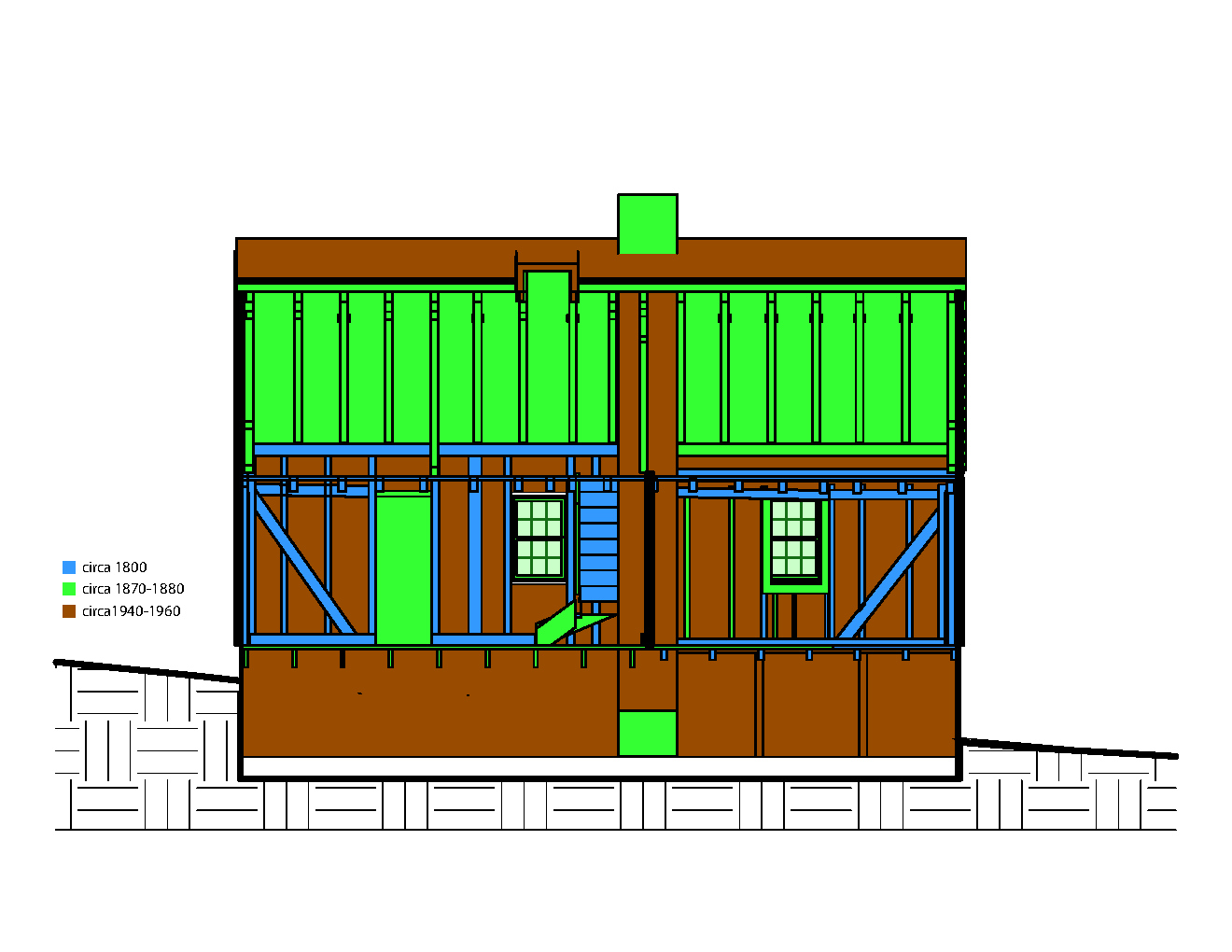
The Smithsonian and Georgia Tech joint team conducted field surveys between in December 2021 and December 2023 and captured the following digital data of the Sellman Tenant House:
- A Terrestrial LiDAR Scan (TLS) 3D point cloud of the exterior and interior of the house. Two TLS scanners, a Leica BLK360 and a FARO Focus S-350 were used to capture the scans. The scans were then processed and registered to create a 3D point cloud. This point cloud provides precise spatial data of the structural members of the house.
- A 3D virtual space of the interior of the house. A Matterport Pro2 3D camera was used to capture the space. This virtual space supplies high-quality imagery of the interior details of the house. Plans were executed in Revit, a proprietary software program.
- A set of aerial photos of the area. DJI Mavic Pro-2 and 3 Enterprise drones were deployed to capture the photos of the roof and the topography of the site.
This project will offer the following key impacts:
- Enhancing and augmenting the captured data of 3D scanning and aerial photogrammetry. Often, the point clouds are seen as the final products, but these dense data sets offer so much more potential than static images or ethereal animations.
- Introducing students to digital survey techniques and how to incorporate these into active architectural investigations. This demystifies the technology and allows architecture students to interface with critical questions of preservation and restoration, as well as community-grounded field work.
- Providing an accessible and clear workflow, including data processing/management and secure outputs, to reproduce these methods at other sites. The model for other projects will leverage archival content alongside analog and digital site surveys for accurate, experiential, and interactive geospatial reconstructions.
- Use of new handheld devices and smartphones for data capture, which will make the documentation process more affordable for small projects.
Team Members:
Danielle S. Willkens, Ph.D, Assoc. AIA, School of Architecture, Georgia Tech
Junshan Liu, Ph.D Candidate, Georgia Tech and Assoc. Professor at Auburn University
Botao Li, Ph.D Student in Architecture, Georgia Tech
Sharon Park, Emerita, Smithsonian Office of Planning, Design and Construction
Billy McReynolds, Smithsonian Office of Planning, Design and Construction
Michael Carrancho,Smithsonian Office of Planning, Design and Construction
Russell Gentry, Georgia Tech
Sara Trigo, Smithsonian Office of Planning, Design and Construction
The team would like to thank Tuck Hines, Director of the Smithsonian Environmental Research Center (SERC), Christine Dunham, Program Specialist SERC and the facilities staff who have been helpful in providing access and information for this article. The study has not fully evaluated all aspects of the Tenant House, with some elements continuing to be subject to re-evaluation and change